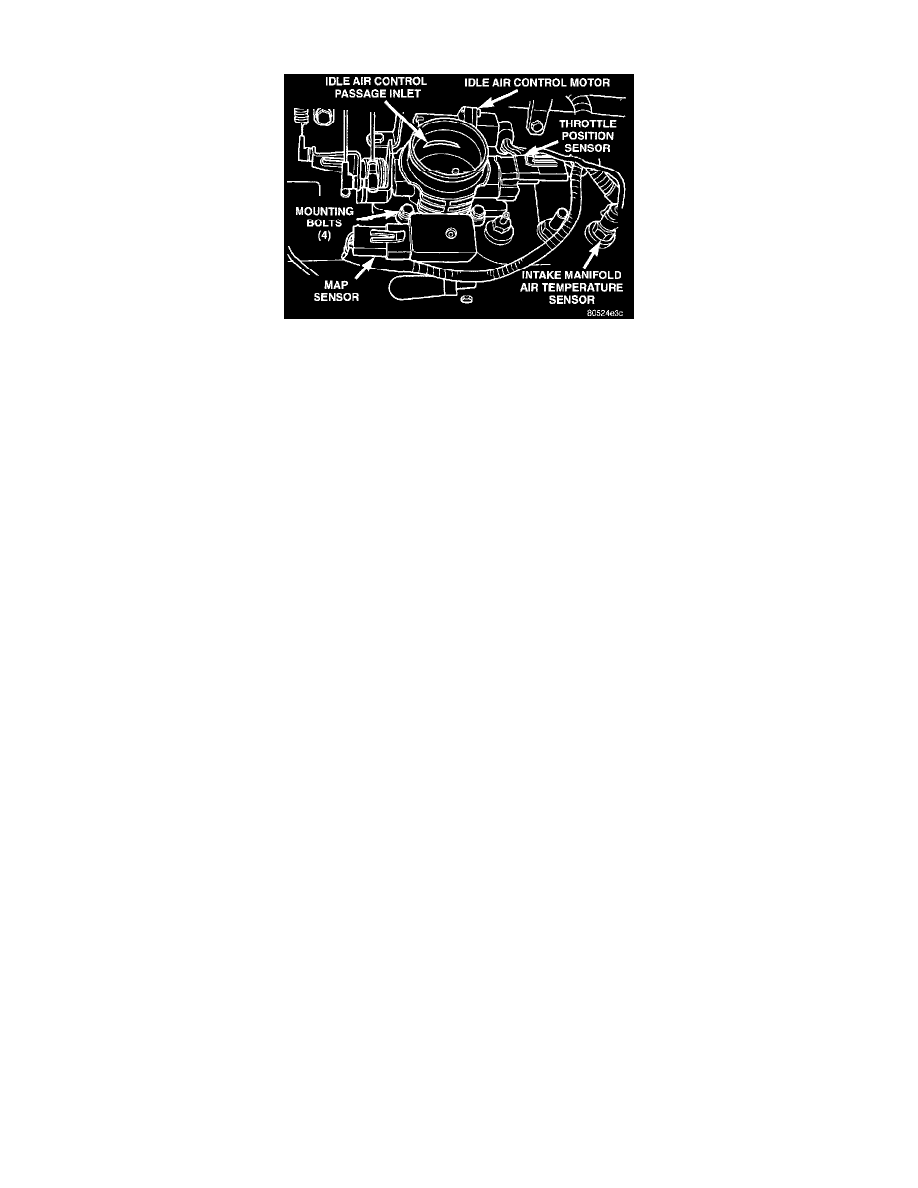Wrangler 4WD L4-150 2.5L VIN P MFI (1998)

Throttle Position Sensor: Description and Operation
Fig. 7 Intake Air Temp. Sensor Location-Typical
THROTTLE POSITION SENSOR (TPS)-PCM INPUT
The Throttle Position Sensor (TPS) is mounted on the throttle body (Fig. 7). The TPS is a variable resistor that provides the Powertrain Control
Module (PCM) with an input signal (voltage) that represents throttle blade position. The sensor is connected to the throttle blade shaft. As the
position of the throttle blade changes, the resistance of the TPS changes.
The PCM supplies approximately 5 volts to the TPS. The TPS output voltage (input signal to the PCM) represents the throttle blade position. The
PCM receives an input signal voltage from the TPS. This will vary in an approximate range between 350 and 900 millivolts at minimum throttle
opening (idle), to less than 4.5 volts at wide open throttle. Along with inputs from other sensors, the PCM uses the TPS input to determine current
engine operating conditions. In response to engine operating conditions, the PCM will adjust fuel injector pulse width and ignition timing.
